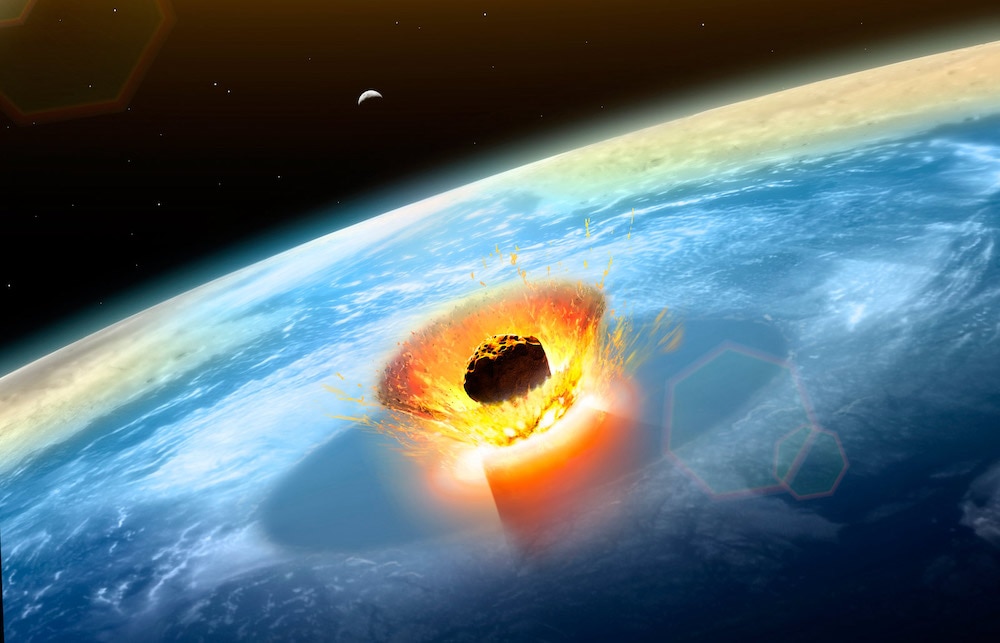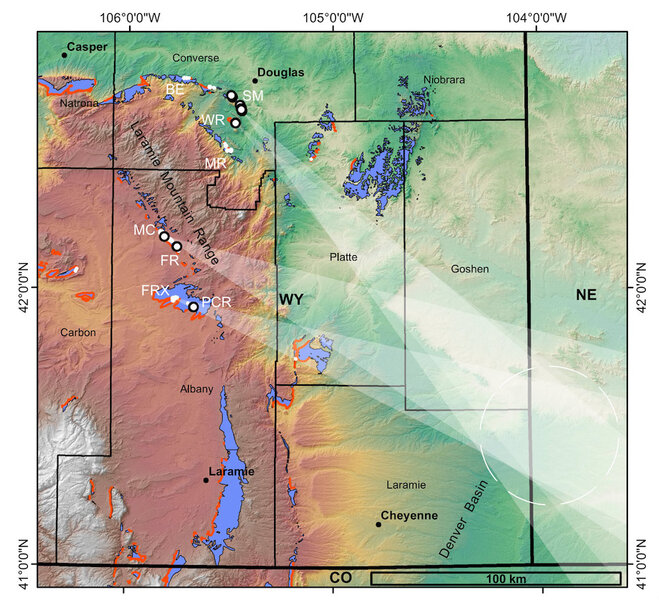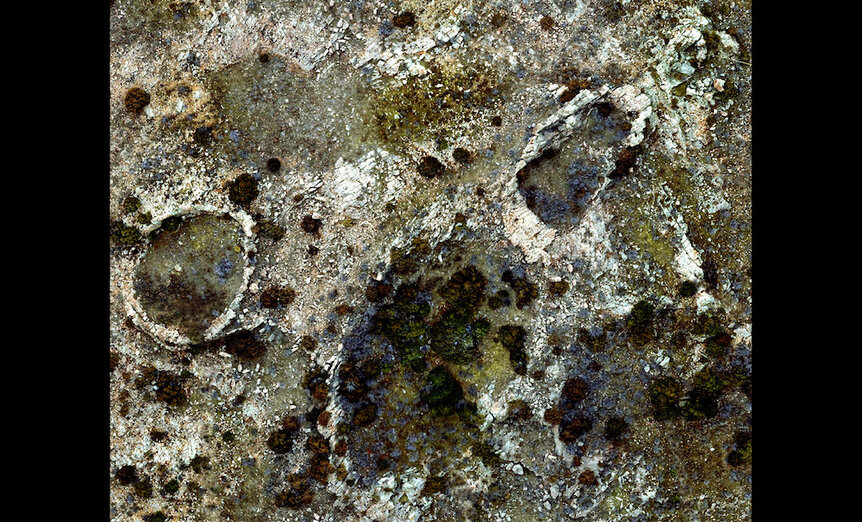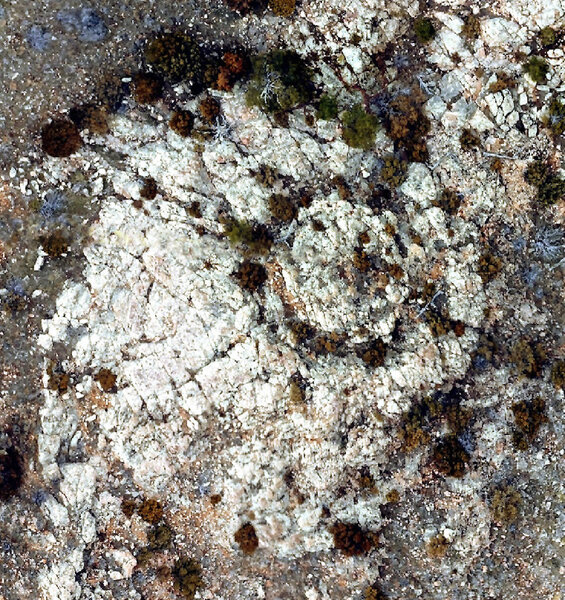Create a free profile to get unlimited access to exclusive videos, sweepstakes, and more!
280 million years ago a huge asteroid slammed into the Wyoming/Nebraska border
Immense explosion rained debris down for hundreds of kilometers.

It wasn’t a dinosaur killer, because it happened just before they arose. But the idea is the same*.
An asteroid around 4 kilometers wide — almost half the diameter of the Chixulub impactor — slammed into the Earth at 70,000 kilometers per hour. The fantastic kinetic energy of motion of the asteroid was converted into light and heat — like 5 million one-megaton bombs going off all at once — as well as transferred into the ground, excavating vast amounts of Earth’s surface.
That material went flying, given huge momentum by the impact. Some blocks of earth four meters in diameter were flung away at twice the speed of sound, falling in remote locations a great distance away, carving smaller but still respectable secondary craters into the ground.
When it was over, a crater 50-65 kilometers wide scarred the planet, glowing from leftover heat, surrounded by thousands of smaller craters over hundreds of thousands of square kilometers.
This happened roughly at the end of the Pennsylvanian Subperiod and the beginning of the Permian Period, 280 million years ago, not long before dinosaurs evolved to roam the area. Still, time and tide… eventually water and mud flooded the region, and turned it to stone. The primary crater and its satellite secondaries lay buried for hundreds of millions of years, until tectonic forces during the Laramide Orogeny pushed up the Rocky Mountains. Erosion cleaned away the softer mudstone from the secondary craters, leaving the tougher material as a sort of fossilized remnant of them. The primary crater, though, hundreds of kilometers away, remained buried.
The first of the secondary craters were discovered in 2018 by geologists. They range in size from a few up to 80 meters across, averaging around 30 meters in diameter, enough to drop a pretty big house into. It was initially thought the craters were from a single small asteroid that broke up into pieces, each chunk carving out a small crater. However, new research has uncovered many more such craters in the area, and they are clearly secondaries, and, as a bonus, indicating the direction and size of the much much larger impact (link to paper).
Using this information they were able to get an idea of where the big impact was: near the Wyoming/Nebraska border.
Which, I will note, is very roughly 100 km from my house. Had I been around in my front yard on that day and happened to look northeast, I would’ve been witness to The Apocalypse. Blinded by the flash and likely burned by the heat pulse, a minute or so later I would’ve felt a magnitude 9 earthquake from the shock wave moving through the ground, and then a wind of hundreds of kilometers per hour that would’ve, at this point, scattered my ashes. Then the sound wave would’ve swept over, louder than standing behind a modern commercial jet engine.
I’ll be honest: I’m glad I missed it. 280 million years between me and that sounds like a decent enough chronological buffer.
But the geologists found the evidence of the cataclysm. In the new work they identify 31 confirmed secondary craters, the very first confirmed secondary craters ever seen on Earth. Other secondary crater candidates from other impacts have been found but remain unconfirmed. We see secondary craters on airless bodies like the Moon and Mercury, carved out by immense impacts on those worlds, but on Earth our atmosphere and hydrosphere erodes them, water and air making relatively quick work of erasing such features.
But in this case that force worked to our advantage: In some places the secondary craters from the Wyoming/Nebraska impact were created in quartz sandstone, probably covered by shallow water. The secondary impacts compressed and heated the material into quartzite, which is tough. When the Rocky Mountains pushed up the craters were re-exposed to the elements, and eventually the craters were revealed.
Secondary craters are formed from far less energetic events than the primary crater, but we’re still talking about rocks upwards of a hundred tons slamming into the ground at the speed of sound, about 1,000 km/hr, releasing the energy equivalent of up to a dozen tons of TNT. The lower angle of impact can create elongated craters with rim features that distinguish them from primary craters. It also creates shock waves when they hit the ground that modifies quartz crystals, which is considered a smoking gun for extraterrestrial impacts.
The rocks fall in clusters as well, with several boulders hitting near each other, sometimes breaking up along the way to create craters that fall along a line, called crater chains. All of this is exactly what’s seen in several of the Wyoming craters the team identified. But besides showing these are indeed secondary impact craters, they also reveal the direction to the main impact site: Tracing the aligned craters and the elongated craters backwards, along the path they came, triangulates to the likely spot where the main asteroid hit. Geological processes can rotate and shift the ground over time, but accounting for that, the scientists think it hit about 100 kilometers east of Cheyenne, just over the Nebraska border.
Nothing is there now; the crater would be buried under hundreds of meters of rock. However, this region is lousy with oil drill sites, and the logs of what was excavated are on record. These can be examined to look for anomalies consistent with an impact crater — that’s on the team’s to-do list, but it can’t be done until the U.S. Geological Survey Core Research Center reopens after the pandemic.
Also on that list is to confirm the 60 other craters the team found that may also be part of the secondary strewn field. If confirmed this will be an unbelievably rich find instead of just a profoundly significant one, so hey, win-win.
Only 208 impact craters are confirmed to exist on Earth, with 31 more now. Adding 60 more to that is a scientific bonanza, and a very big deal. Adding to this a possible massive primary crater, with good dating information, is extremely important. Impacts this big affect the entire planet, and there could be more evidence of it already sitting in a geologist’s lab someplace.
It happened long ago, but there is still much it can teach us about our world today, and stands as a lesson to what can happen if we ignore the sky above us.
* CORRECTION (Feb. 21, 2022): I originally wroite that this was a dinosaur killer, but the dinosaurs didn't arise until the Mesozoic Era, which started after the end of the Permian Period/Paleozoic Era, which was after this event. My apologies for any confusion.

















